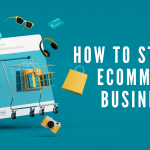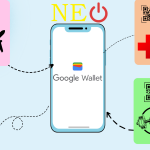Table of contents [Show]
A bold move in a changing marketing world
Last week, Adobe announced it will acquire Semrush at US $12 per share, totalling about US $1.9 billion — an all-cash deal. What strikes me immediately is how this shows Adobe's shift: from “creative tools” (photoshop, illustrator, etc.) into deeper “marketing intelligence + visibility” territory.
The announcement highlights that Semrush will bolster Adobe’s capabilities to understand how brands appear not just in traditional search engines, but across large language models (LLMs), AI chatbots, and the broader web. In other words: the game of being visible is changing. It’s moving beyond keywords and links to “are you showing up when someone asks an AI assistant about a product?”
Why this matters (and why I think it’s smart)
From my perspective, there are three big reasons this deal makes sense:
- Visibility in the AI era
When searching for something that used to mean typing into Google, today some people ask a chatbot, a voice assistant or an AI-powered “answer engine”. Adobe sees this shift and wants to help brands be found in that new environment. Semrush brings tools that already dig into “generative engine optimisation (GEO)” — essentially making sure brands are discoverable inside AI responses. - Broadening the marketing stack
Adobe already offers strong tools in analytics, experience management, and content workflow. By adding Semrush, it can tie in the visibility and competitive intelligence side (SEO, brand mentions, AI-driven discoverability) with its existing infrastructure. That means marketers could get a more integrated view: How is my brand appearing, how am I engaged, how am I converting? From my vantage point, that’s a compelling value proposition. - Staying ahead of competition
In tech and marketing, complacency is dangerous. Adobe’s previous big acquisition efforts (for example the attempted purchase of Figma Inc.) faced regulatory headwinds, and Adobe’s share price has seen pressure. With this move, Adobe signals: “We’re serious about where marketing is going.” For agencies, brands, and marketing-tech vendors, this could shift the competitive landscape.
My thoughts—and caveats
Of course, while I see many positives, there are always things to watch. Here are my thoughts:
- Integration risk
Big acquisitions often come with the challenge of integrating cultures, systems, product roadmaps. Will Semrush remain somewhat independent (which may be good for its many smaller clients) or will it be rolled into Adobe’s enterprise stack? The former keeps flexibility, the latter may align more with Adobe’s scale. My guess is Adobe will try the best of both: keep Semrush’s brand and tools alive, but gradually connect them deeper with Adobe Experience Cloud. - Impact on smaller users
Semrush is used by agencies, SMEs, freelancers as well as large enterprises. Adobe’s customers skew large. My question: will smaller users feel squeezed (pricing changes, roadmaps shifting focus to larger clients)? From what I see, the announcement emphasises “brand visibility” for big-brand marketers, so SMEs may need to watch closely. - Regulatory & timing
The deal is expected to close in the first half of 2026, subject to regulatory approval and shareholder consent. Timing matters because if the market shifts further (new search engines, privacy rules, AI regulation) Adobe needs to stay nimble. - Is “visibility” still an untapped frontier?
I believe yes. Traditional SEO is mature. But brand discoverability in AI/LLM responses is nascent. The quotes from Adobe stress that “brands that don’t embrace this new opportunity risk losing relevance and revenue.” I think that rings true—if you’re only focused on page-rank you may soon be missing the conversation that happens inside chat assistants or voice responses. From where I’m sitting, this shift is real and smart to anticipate.
What this means for marketers (and for you)
Since you’re someone who thinks about marketing, visibility, growth, I want to highlight implications:
- Audit your toolset: Are you only measuring traditional SEO (rankings, backlinks, traffic)? Consider adding visibility metrics for AI / LLM environments—are you present when someone asks “Hey AI, what’s the best widget for X?”
- Start planning for GEO: Generative Engine Optimisation (GEO) is still new, but the curve is beginning. If you wait until it’s mainstream, you may be behind. Start experimenting with content that answers questions in conversational form, structured for chat/voice responses.
- Think about scale & partners: If you’re an SME or agency, you may not need the entire Adobe stack now—but keep an eye on how tools like Semrush evolve under Adobe. It might unlock new integrations or bundled packages.
- Be ready for change: Tools, pricing, product roadmaps may shift post-deal. Keep flexible—what worked last year may look different next year.
Final thoughts
In short: I find this acquisition by Adobe to be very interesting and timely. It reflects the reality that marketing, search and brand-visibility are undergoing a change. It’s not just about being on page one of Google anymore—it’s about being visible when someone asks an AI, interacts via voice, sees a chatbot, uses a smart assistant.
For Adobe, this is a proactive move into the centre of that change. For marketers, this is a reminder: visibility is more than traffic; it’s presence, relevance, discoverability.
If I were advising a business today, I’d say: treat this as a signal. Begin shifting your measurement, your content strategy, your toolset—even if you only take small steps now. Because the future of “being found” is evolving fast.









